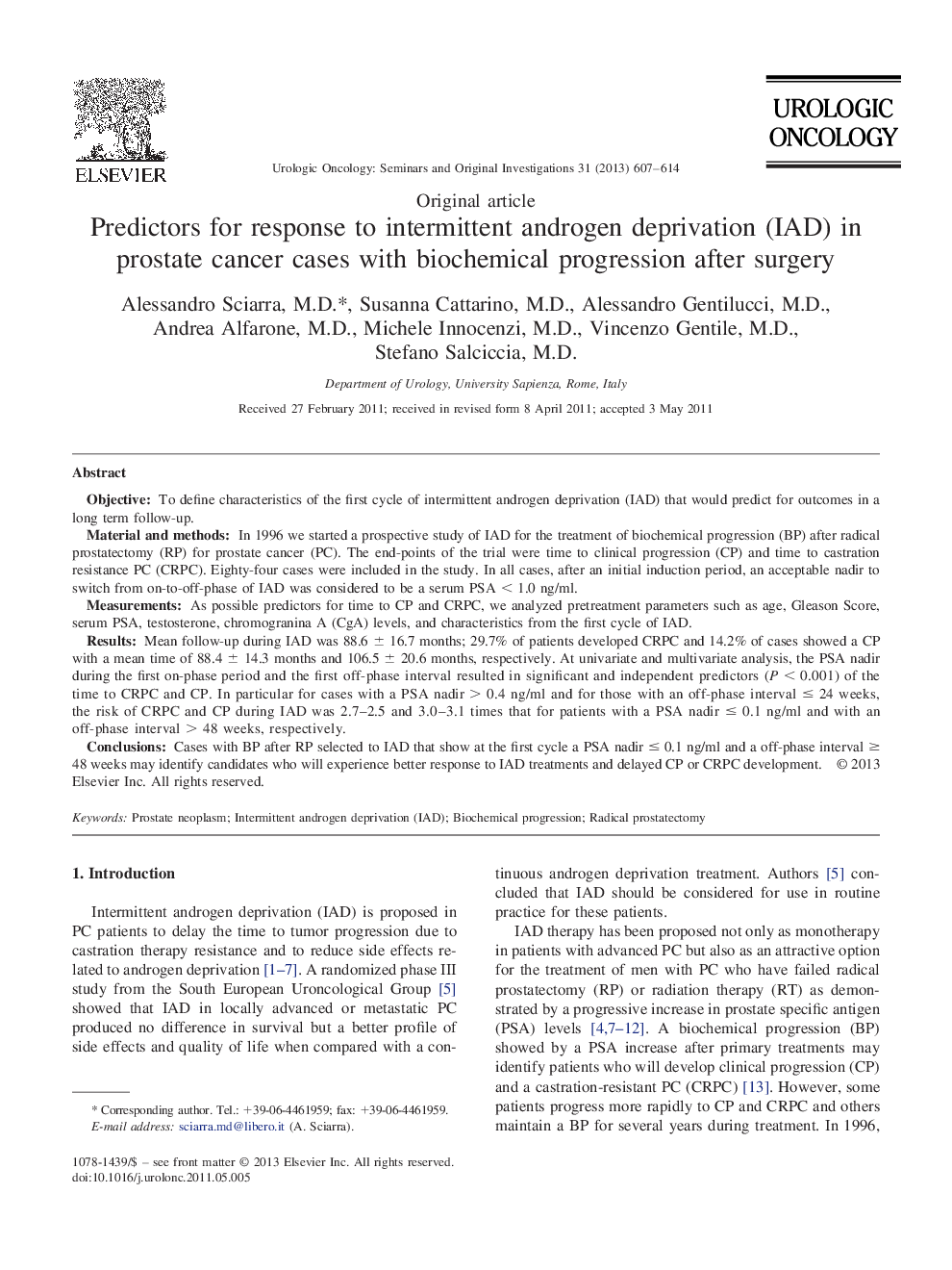| Article ID | Journal | Published Year | Pages | File Type |
|---|---|---|---|---|
| 3999535 | Urologic Oncology: Seminars and Original Investigations | 2013 | 8 Pages |
ObjectiveTo define characteristics of the first cycle of intermittent androgen deprivation (IAD) that would predict for outcomes in a long term follow-up.Material and methodsIn 1996 we started a prospective study of IAD for the treatment of biochemical progression (BP) after radical prostatectomy (RP) for prostate cancer (PC). The end-points of the trial were time to clinical progression (CP) and time to castration resistance PC (CRPC). Eighty-four cases were included in the study. In all cases, after an initial induction period, an acceptable nadir to switch from on-to-off-phase of IAD was considered to be a serum PSA < 1.0 ng/ml.MeasurementsAs possible predictors for time to CP and CRPC, we analyzed pretreatment parameters such as age, Gleason Score, serum PSA, testosterone, chromogranina A (CgA) levels, and characteristics from the first cycle of IAD.ResultsMean follow-up during IAD was 88.6 ± 16.7 months; 29.7% of patients developed CRPC and 14.2% of cases showed a CP with a mean time of 88.4 ± 14.3 months and 106.5 ± 20.6 months, respectively. At univariate and multivariate analysis, the PSA nadir during the first on-phase period and the first off-phase interval resulted in significant and independent predictors (P < 0.001) of the time to CRPC and CP. In particular for cases with a PSA nadir > 0.4 ng/ml and for those with an off-phase interval ≤ 24 weeks, the risk of CRPC and CP during IAD was 2.7–2.5 and 3.0–3.1 times that for patients with a PSA nadir ≤ 0.1 ng/ml and with an off-phase interval > 48 weeks, respectively.ConclusionsCases with BP after RP selected to IAD that show at the first cycle a PSA nadir ≤ 0.1 ng/ml and a off-phase interval ≥ 48 weeks may identify candidates who will experience better response to IAD treatments and delayed CP or CRPC development.
